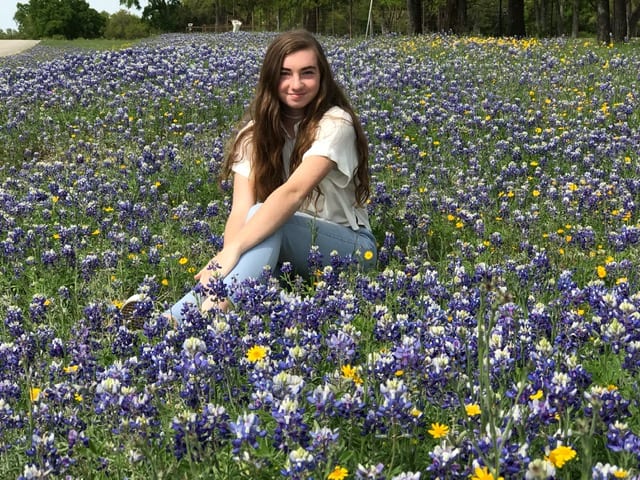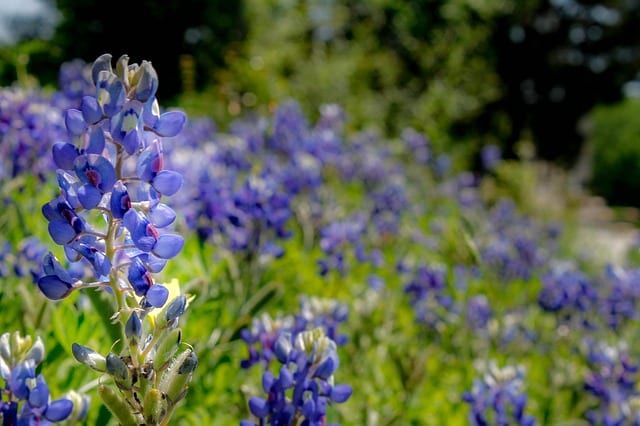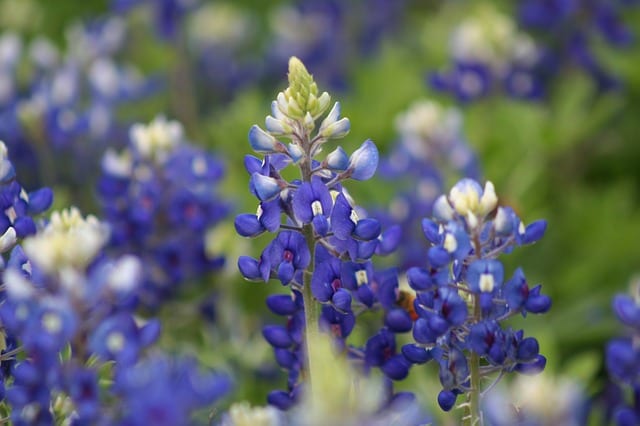Are you ready to start planting bluebonnets and other wildflowers to spread the love for our pollinators in San Antonio? Check out this fun blog for a few interesting bluebonnet facts and some tips to grow our state flower successfully. For more in depth wildflower planting tips you can access our wildflower planting guide here.
Don’t forget to take a look at our 4 part blog series featuring all the amazing wildflower seeds we have packaged up in our Hill Country Pollinator Mix this year. We have double the varieities of wildflower seeds from last year!
5 Facts and Tips about Bluebonnets
1. Bluebonnets Need Fall.
Don’t even think about planting the seeds of bluebonnets at the wrong time of year. Most people just don’t think about bluebonnets until they want that perfect family picture in spring; but wait until then to plant your own seeds and you will be waiting a very long time, like forever! Bluebonnet seeds need to be planted in early fall. They need all the time from fall to spring to get established and grow. They way these wildflowers work is: they bloom in spring, go to seed in summer, and germinate in early fall. Planting bluebonnet seeds (and other wildflowers) at the wrong time of year is the number one reason people are unsuccessful.
2. Bluebonnets Have Small Appetites.
Did you know that bluebonnets do not need fertilizer? As a matter of fact, they do not even want it! You should give your wildflowers a specific area or bed to grow in, but you don’t need to go overboard with too much prepping of the area like you would a perennial, annual, or vegetable bed. If you put too much “extra” stuff into your wildflowers beds (compost, fertilizer, etc…) your bluebonnets will disappoint by producing all leaves and no blooms.

This bluebonnet patch fills in every year. It never gets fertilized, and survives on natural rainfall year after year.
3. Bluebonnets Aren’t Very Thirsty.
Sow your bluebonnet seeds and area that drains well. For the first 4 to 6 weeks after sowing your bluebonnet seeds, make sure the area get frequent, but light, watering. Hopefully fall rains will help out a little. While you do need to water your newly sown seeds or transplants to get them established, the rest of the time you can let them fend for themselves and rely on natural rainfall. (Extreme periods of extended drought is an exception and they should be offered a little drink)
4. Bluebonnets Attract Pollinators In A Unique Way.
Did you know the white spot on bluebonnets contains patterns that are invisible to us but provide bees a virtual landing pad? The white spot that reflects ultra violet light signals that the bluebonnet is ready to be pollinated. The white spot then turns to a magenta color when the bluebonnets are no longer as fertile, and since the bees don’t register this color, they move on down the pasture. Isn’t it cool how nature works?

In this picture, you can really see those white spots turning magenta. The bees better get the goods while they can!
5. Bluebonnets Are Tough.
Did you know the seed coats of bluebonnets are thick and tough enough to protect them from dry periods and flash fires? Because of the durability and thickness of the seed coat, some seeds from bluebonnets can take up to 3 years to germinate! Not all seeds will take this long, but it helps to understand why you might not automatically have a giant field of bluebonnets a year after planting just a few plants. (See an old Happy Gardener here for info on “scarring” bluebonnet seeds to help them germinate faster.) Give them time to emerge and complete their lifecycle each year and you’ll be surrounded by blue in no time. Let your plants completely die and dry at the end of blooming so they have a chance to create strong, viable seeds for you to collect (or let the seeds fall naturally).
~The Happy Gardener, Lisa Mulroy


Last year, I had dozens of bluebonnets. This year, just one scrawny, but plucky, little guy made it back. Although I appreciate that one little fella, I was upset that I didn’t have more. And he wasn’t even in my designated bluebonnet patch.
Was the area disturbed through the spring? Any mowing done the previous year before the seed pods had matured? I’m attaching some info about growing and establishing bluebonnets from Ladybird Johnson Wildflower Center that may be of some use.https://www.wildflower.org/learn/how-to/grow-bluebonnets
When are bluebonnet plants (not seeds) for sale in San Antonio? Where? When is the best time to transplant them? I am wanting to transplant bluebonnets to our ranch in Junction.
Both our locations have some bluebonnet transplants, and you can plant them through winter. Call before visiting to make sure we still have them in stock as they get bought up quickly. We can hold some for you.